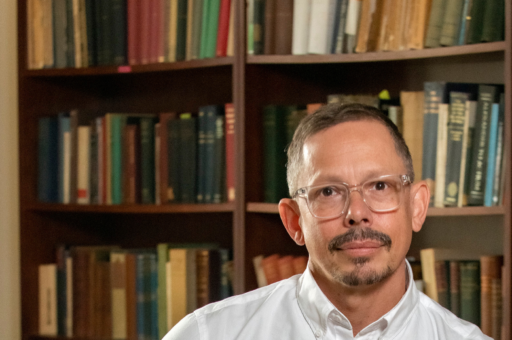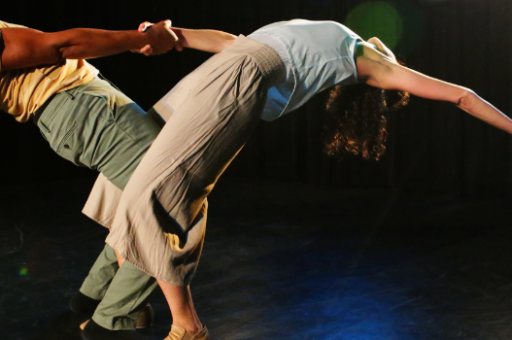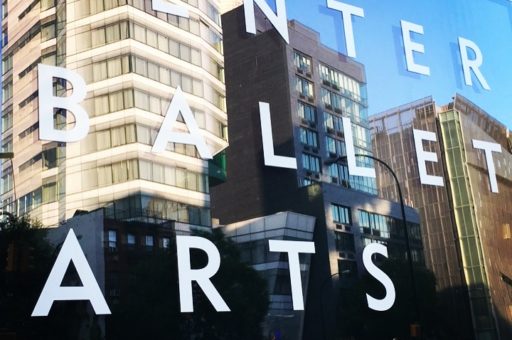Anjali Austin (CBA ’17) is a distinguished interdisciplinary artist whose career includes thirteen years of performing with the critically acclaimed Dance Theatre of Harlem. A movement artist, she has performed classical, neo-classical, and contemporary works by prominent choreographers, and choreographs nationally and internationally. Ballets she has performed include Billy the Kid, Swan Lake (Act II), Serenade, Flower Festival, Dougla, Concerto Barocco, Prince Igor, Paquita, and Frankie and Johnny – in which she held a vocal role. Also to her credits are PBS television specials Fall River Legend, A Streetcar Named Desire, and Creole Giselle. Ms. Austin is a Professor in the School of Dance at Florida State University, holds an MFA in Interdisciplinary Arts from Goddard College, serves as President–elect of CORPS de Ballet International, conducts lectures on the history and legacy of Black classical ballet dancers, is a Specialized Master Trainer in GYROTONIC® and GYROKINESIS® methodology, and recently premiered her solo work Live Oak at PianoFight in San Francisco, California.
For more on Austin’s CBA Fellowship, visit her fellow page.
What made you decide to apply to the CBA Fellowship?
First and foremost it seemed like an opportunity and one that would focus on ballet. On a larger scale, Art, but specifically ballet. I thought it would be fruitful to explore the scholarly side of my creative work, as well as continue the research of my writing and lectures.
Tell us about your project and your project goals upon starting your fellowship at The Center.
There were two projects that I worked on while at CBA. The first was a research project focused on the history and legacy of African-American classical ballet dancers. This was the basis of my written proposal and I anticipated utilizing the time to review personal archives and resource materials. The second project was the opportunity to show my performative solo piece Live Oak. This work is based on 33 quilts I inherited from my maternal grandmother, Mrs. Gussie Beatrice Arnold Hill, and speaks to family heritage. It was during our fellows orientation meeting when I realized it was possible to have a showing of this piece at The Center. That orientation was valuable for both Paul [Vasterling (CBA ‘17)] and me as it surfaced the range of opportunities and options available for us to conduct research and invest in process.
How have your project goals evolved?
What evolved from my goals while in New York were a performance of Live Oak and a lecture presentation titled, Perspectives of an American Artist: The Auto-Ethnographic Chronicles of an African-American Classical Ballet Dancer. The process oriented nature of the fellowship provided time to review, investigate, and edit materials and artifacts in a manner that prioritized the work, as opposed to a completion date. Using my research on Black classical ballet dancers as example, my initial instincts were to type out each of my Dance Theatre of Harlem tour diaries. That was not productive for my needs and I realized it best for me to read them for saturation of content. This lead to my decision to focus on my Soviet Union tour diary (1988) and include experiences from it in my lecture series.
Could you talk about the ways in which you utilized CBA spaces?
Absolutely — I will admit a good amount of my time was spent in the studio as it was there where Live Oak was performed and Perspectives presented. For rehearsals I would be there in the evenings for three or four hours. With the availability of a piano I also began to play again. This brought to mind the concept of ‘musician as mover’ and its effect on me as a choreographer and performer. Interestingly, in rehearsing Live Oak I would practice [piano] beforehand, then go through the piece a couple of times, and afterwards something would call me back to the piano. This was my cool down.
Having access to the studio and office was a nice marriage which gifted me with a sense of balance. As someone who works in an academic setting, and is about to begin the Fall semester, it was a nice segue for what is to come. I had time and space for reading and digesting my diaries, setting goals for writing and moving the lectures forward, and organizing additional options for research – both creative and scholarly.
You spent your fellowship here alongside Paul Vasterling, CEO and Artistic Director of Nashville Ballet. What was your relationship like with Paul? Did you have any opportunities to discuss your work or collaborate?
We certainly had time together. The first week we had lunch during which we discussed our works and bounced ideas off of each other. Paul also came to my Live Oak performance and we had a chance to have a discussion about it in relationship to his work Lucy Negro Redux. We are hopeful about finding ways to connect with each other in the future.
What might you say to someone interested in applying for a fellowship?
That the opportunities available through The Center are about Ballet and inclusive of the interdisciplinary nature of art and artistry. This is what I experienced during my fellowship. The staff works supportively with the fellows to provide for their needs and access to resources. I particularly appreciated CBA’s introductions to colleagues and researchers in the field, as well as access to New York University’s Library and New York’s Public Library for the Performing Arts.
My experiences at The Center for Ballet and the Arts lead me to believe it is a resource for artists and scholars from a range of fields. It provides opportunities for exploration and investigation, discussion and debate, and the sharing of ideas from varied perspectives and experiences.




